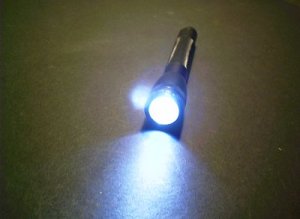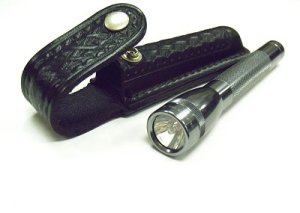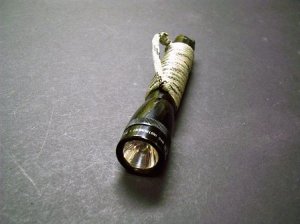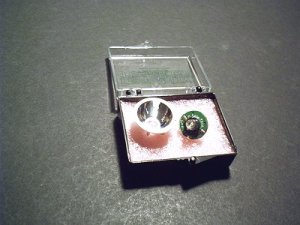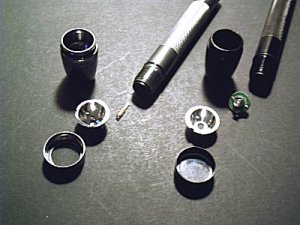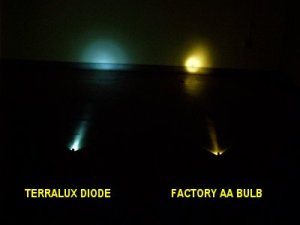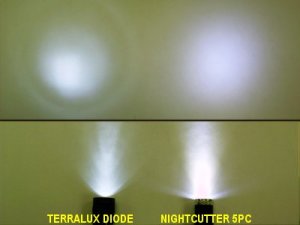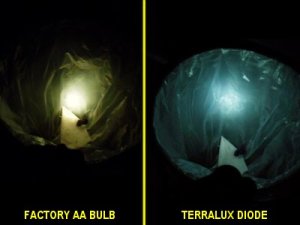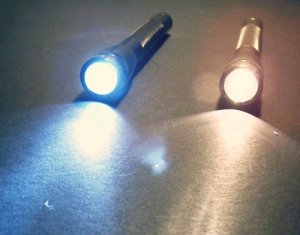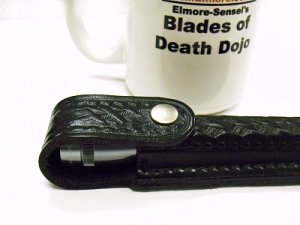Before I discovered contemporary "tactical" lights and the plethora of utility torches available on today’s high-tech market, the 2AA Mini Maglite was the standard by which I judged all portable flashlights. Over the years I’ve accumulated quite a few of them, several of which are kicking around in various toolboxes and survival kits. The standard Mini Maglite is a good tool, really – rugged, relatively light, compact, and suitable as a self-defense tool because its dimensions are similar to a pocket stick. Unlike many portable torches, the Mini Maglite has a focusable head that permits both spot- and wide-beam lighting.
I knew a fellow in college who believed very highly in self-reliance. One of the things he always carried with him was a Mini Maglite (complete with colored lenses, though to this day I’m not sure for what those colored lenses would have been good). I think my father had a few of these lights hanging around when I was younger, too (though he carried a penlight in his shirt pocket as his primary utility light). After a severe storm knocked out power to my area for several days, I bought multiple lights and used them as candles during the blackout. I remember thinking that I should accumulate as many lights as possible for just such situations in the future.
The problem with the Mini Maglite, however, is that it is – let’s be honest – built on fairly outdated technology. The incandescent bulbs burn out extremely quickly (that’s why there’s an extra bulb in the tailcap of every Maglite) and even when new produce a relatively feeble, yellowish light. While extremely focusable as a point light source, such bulbs don’t really produce that many lumens (I think the lumens produced by a standard Mini Maglite is a figure in the single digits). While a good little light, the Maglite simply cannot compete with newer illumination technology such as Xenon-bulb tactical lights and solid-state LED torches.
My Maglites were languishing amidst my gear when I discovered TerraLux. The company produces a variety of LED retrofit kits. Among the best of these is the MiniStar2, which consists of a 1 Watt Luxeon diode and reflector cup. By removing the lightbulb and reflector from a standard 2AA Mini Maglite, you can replace them with the reflector and diode provided in the kit. The components drop in easily (if I can manage it, anyone can). When you’re done, you’ve got a Mini Maglite that produces whiter, brighter light – and you’ll never have to buy a replacement bulb again.
The MiniStar2 costs roughly twice as much as the Mini Maglite itself (as the 2AA Maglite is cheap and available everywhere). It pays for itself in relatively short order, however. Setting aside the fact that you’re getting up to 25 lumens of output from your formerly weak Maglite, your batteries will last several times longer because the power-regulated diode uses power much more efficiently than does an incandescent bulb. The diode itself is rated for 100,000 hours. If you can find batteries that last that long, you may as well leave your MiniStar2-equipped light switched on for the next decade and change.
Because the Mini Maglite can be focused so tightly with its incandescent bulb, comparisons using the naked eye are a little deceiving. I did a lot of tests before I settled on some shots that show the comparative benefit of the diode. One comparison that I thought particularly helpful was simply shining the light into a trash can. The TerraLux-equipped Maglite produced more light, enabling me to see more of the can, than did the factory Maglite.
I was extremely impressed by the TerraLux kit. Thanks to TerraLux my many 2AA Mini Maglites have a new lease on life. I plan to retrofit them all, making them much more useful, brighter, longer-lasting utility tools on which I can rely more confidently in the future. If you have any Mini Maglites at home, in your car, on your boat, or wherever, you owe it to yourself to install a TerraLux LED in each of them.
